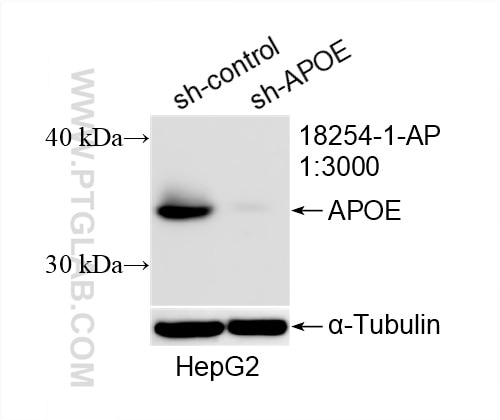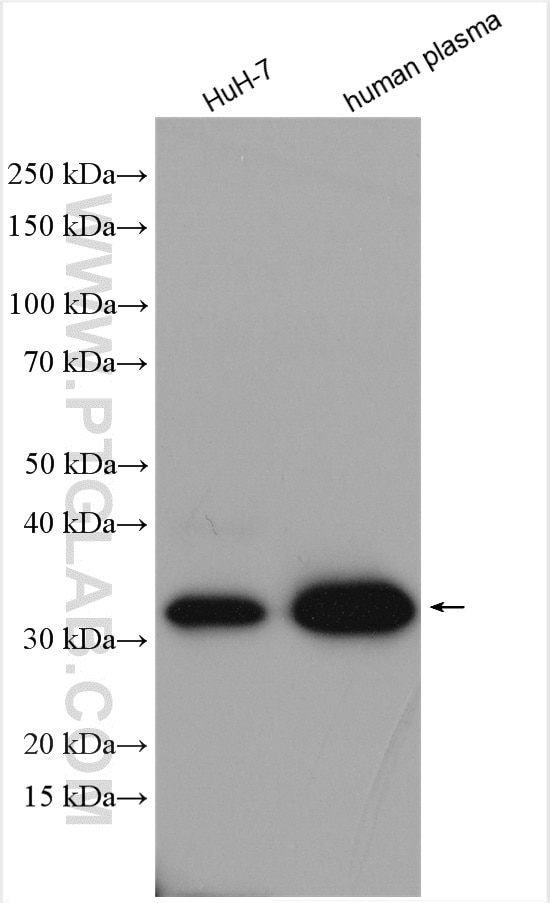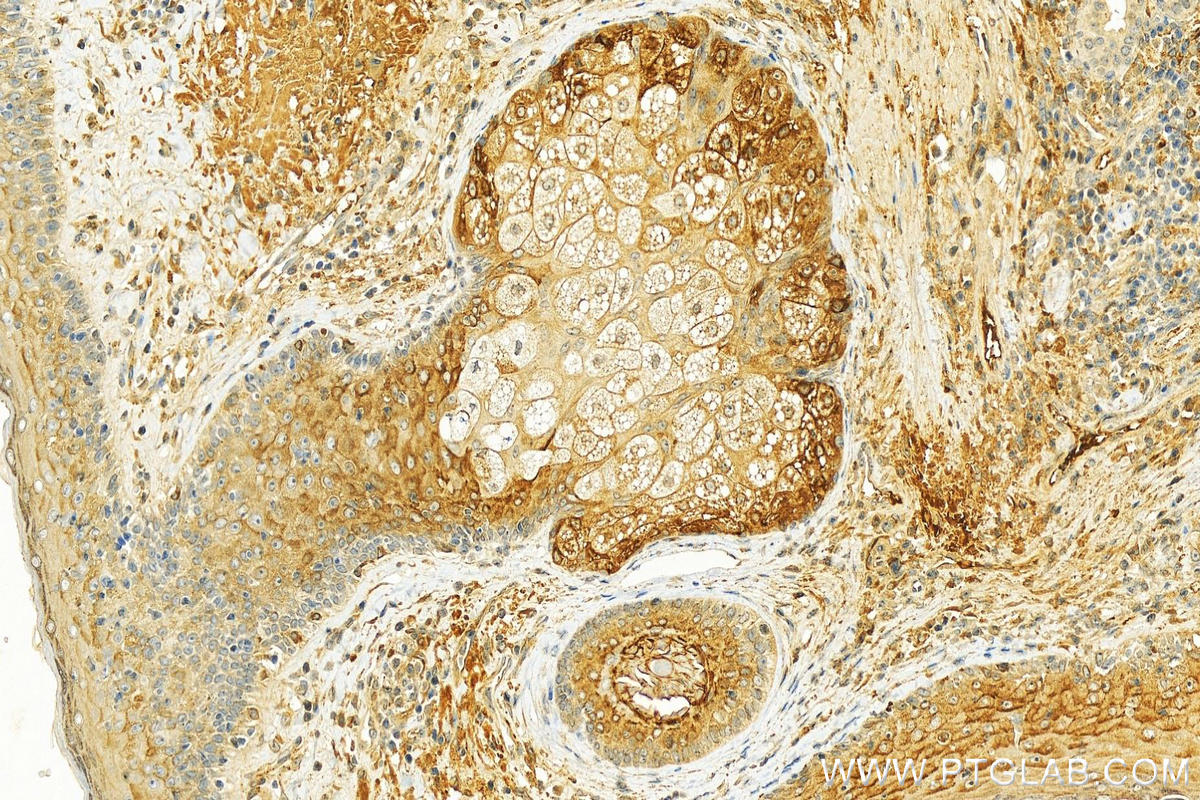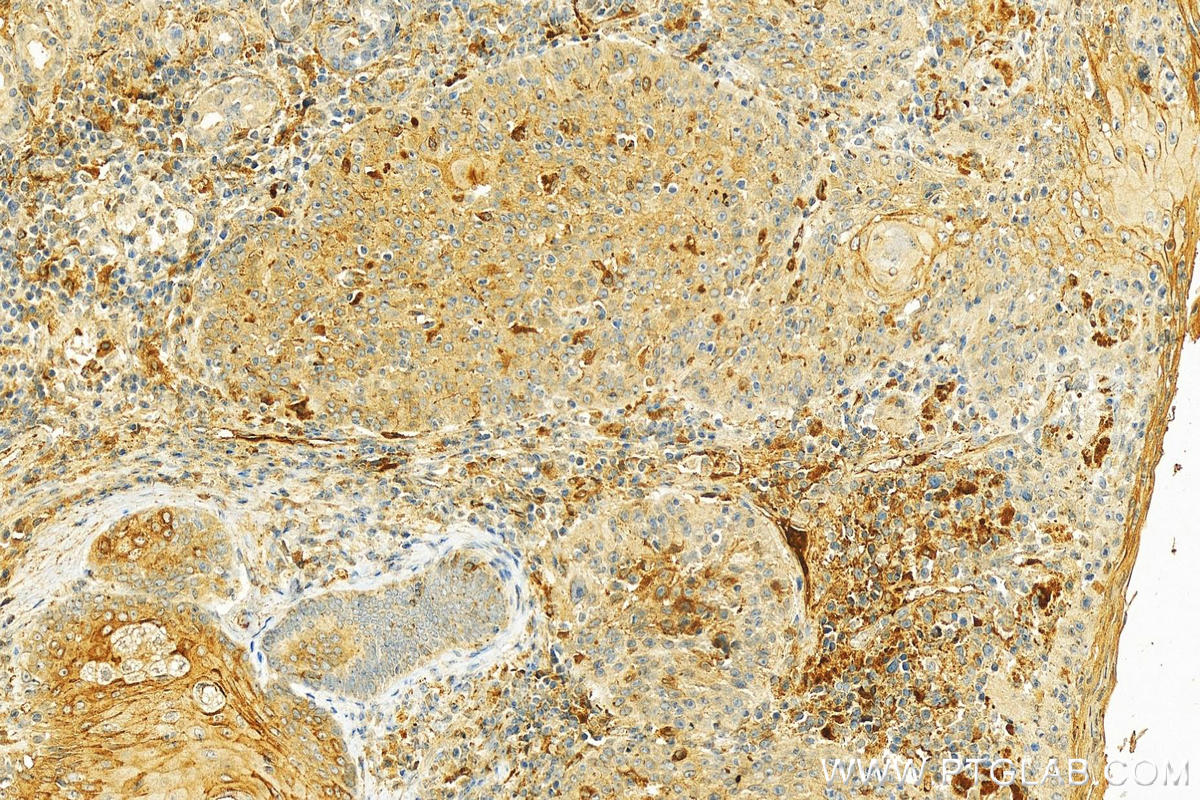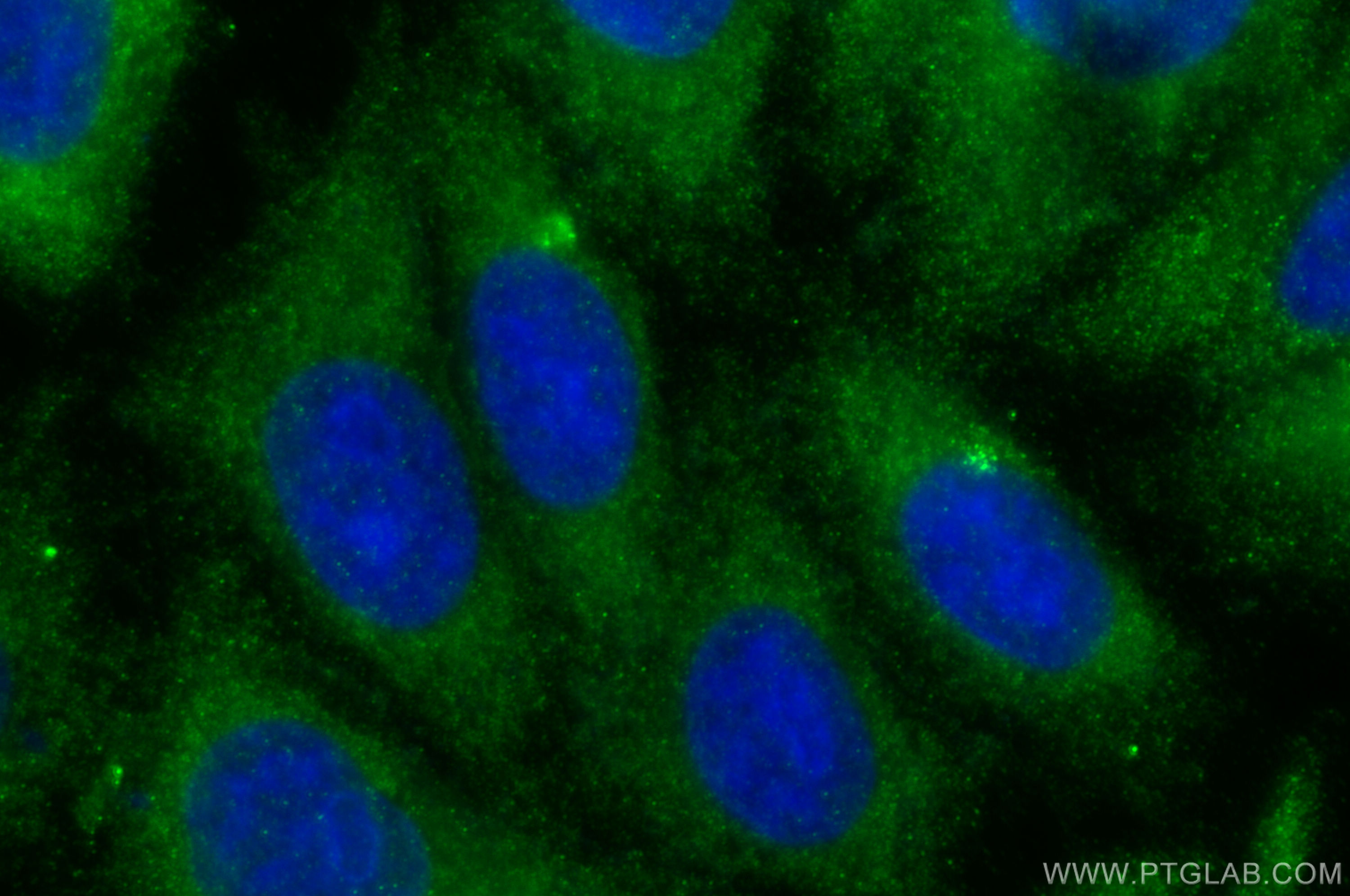- Featured Product
- KD/KO Validated
APOE Polyklonaler Antikörper
APOE Polyklonal Antikörper für WB, IHC, IF/ICC, ELISA
Wirt / Isotyp
Kaninchen / IgG
Getestete Reaktivität
human und mehr (1)
Anwendung
WB, IHC, IF/ICC, ELISA
Konjugation
Unkonjugiert
Kat-Nr. : 18254-1-AP
Synonyme
Geprüfte Anwendungen
| Erfolgreiche Detektion in WB | HepG2-Zellen, HuH-7-Zellen |
| Erfolgreiche Detektion in IHC | humanes Hautkrebsgewebe Hinweis: Antigendemaskierung mit TE-Puffer pH 9,0 empfohlen. (*) Wahlweise kann die Antigendemaskierung auch mit Citratpuffer pH 6,0 erfolgen. |
| Erfolgreiche Detektion in IF/ICC | HepG2-Zellen |
Empfohlene Verdünnung
| Anwendung | Verdünnung |
|---|---|
| Western Blot (WB) | WB : 1:1000-1:6000 |
| Immunhistochemie (IHC) | IHC : 1:300-1:1200 |
| Immunfluoreszenz (IF)/ICC | IF/ICC : 1:200-1:800 |
| It is recommended that this reagent should be titrated in each testing system to obtain optimal results. | |
| Sample-dependent, check data in validation data gallery | |
Veröffentlichte Anwendungen
| KD/KO | See 1 publications below |
| WB | See 15 publications below |
| IHC | See 3 publications below |
| IF | See 8 publications below |
Produktinformation
18254-1-AP bindet in WB, IHC, IF/ICC, ELISA APOE und zeigt Reaktivität mit human
| Getestete Reaktivität | human |
| In Publikationen genannte Reaktivität | human, Maus |
| Wirt / Isotyp | Kaninchen / IgG |
| Klonalität | Polyklonal |
| Typ | Antikörper |
| Immunogen | APOE fusion protein Ag13070 |
| Vollständiger Name | Apolipoprotein E |
| Berechnetes Molekulargewicht | 36 kDa |
| Beobachtetes Molekulargewicht | 34-38 kDa |
| GenBank-Zugangsnummer | BC003557 |
| Gene symbol | APOE |
| Gene ID (NCBI) | 348 |
| Konjugation | Unkonjugiert |
| Form | Liquid |
| Reinigungsmethode | Antigen-Affinitätsreinigung |
| Lagerungspuffer | PBS with 0.02% sodium azide and 50% glycerol |
| Lagerungsbedingungen | Bei -20°C lagern. Nach dem Versand ein Jahr lang stabil Aliquotieren ist bei -20oC Lagerung nicht notwendig. 20ul Größen enthalten 0,1% BSA. |
Hintergrundinformationen
The apolipoprotein E (APOE) is a 299-amino acid polypeptide that mediates the binding, internalization, and catabolism of lipoprotein particles, and also serves as a ligand for the LDL (apo B/E) receptor and for the specific apo-E receptor (chylomicron remnant) of hepatic tissues. The very strong association of the APOE ɛ4 allele with AD risk and its role in the accumulation of amyloid β in brains of people and animal models solidify the biological relevance of APOE isoforms but do not provide mechanistic insight. APOE can be detected 43kDa and 69kDa dimers (PMID: 9831633).
Protokolle
| PRODUKTSPEZIFISCHE PROTOKOLLE | |
|---|---|
| WB protocol for APOE antibody 18254-1-AP | Protokoll herunterladen |
| IHC protocol for APOE antibody 18254-1-AP | Protokoll herunterladenl |
| IF protocol for APOE antibody 18254-1-AP | Protokoll herunterladen |
| STANDARD-PROTOKOLLE | |
|---|---|
| Klicken Sie hier, um unsere Standardprotokolle anzuzeigen |
Publikationen
| Species | Application | Title |
|---|---|---|
Br J Cancer A new panel of pancreatic cancer biomarkers discovered using a mass spectrometry-based pipeline. | ||
Transl Oncol Multi-omics analysis-based macrophage differentiation-associated papillary thyroid cancer patient classifier | ||
Biochim Biophys Acta Mol Cell Biol Lipids Inducible global knockout of surfeit locus protein 4 in adult mice results in hypolipidemia, intestinal lipid accumulation, liver injury, and increased mortality | ||
bioRxiv SARS-CoV-2 desensitizes host cells to interferon through inhibition of the JAK-STAT pathway. | ||
Stem Cell Res Ther Single-cell sequencing of facial adipose tissue unveils FKBP5 as a therapeutic target for facial infiltrating lipomatosis |
